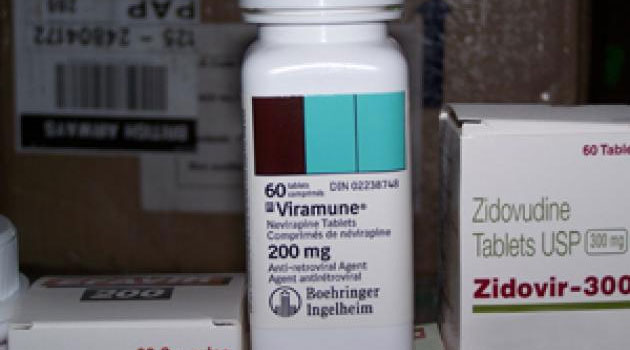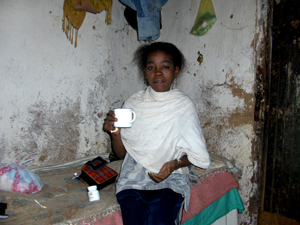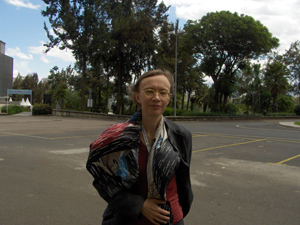When George W. Bush proposed his five-year, $15 billion initiative to “turn the tide against AIDS” in the developing world in 2003, he said the availability of low-cost drugs to fight the disease “places a tremendous possibility within our grasp.”
Bush told Americans in his State of the Union address that the per-patient cost of antiretroviral drugs (ARVs), which improve the health and extend the lives of people who have HIV/AIDS, had dropped “from $12,000 a year to under $300 a year.”
That significant decrease was a result of the competition from generic drug manufacturers. Yet Bush’s initiative, the President’s Emergency Plan for AIDS Relief (PEPFAR), funded by Congress a few months after that speech, has been slow to embrace funding cheaper generic ARVs.
ARV treatment is a major focus of PEPFAR and similar international programs. In addition to providing the drugs, it typically includes things such as HIV testing, counseling, monitoring for side-effects, lab tests and hospitalization.
Estimates released by PEPFAR reveal that in 2004 and 2005, its first two fully funded years, the plan allocated only about 5 percent of its overall ARV drug budget — less than $15 million — for generic drugs. A key reason for that lies in PEPFAR’s own rules: only ARVs approved by the U.S. Food and Drug Administration (or given tentative FDA approval through an expedited review process set up in May 2004) can be procured with the program’s funds.
While the president’s AIDS initiative was still on the drawing board, that proposed stipulation drew fire from some, including Rep. Henry Waxman of California.
“I strongly oppose the efforts to block the use of low-cost generic drugs through the imposition of unnecessary and onerous drug approval standards,” the Democrat wrote in a March 2003 letter to Bush. “It is no secret that U.S. pharmaceutical companies, which make brand-name drugs, do not want funds to flow to generic drug companies in India.”
But the proposal became PEPFAR policy.
In 2004, almost all ARVs administered through the program were from well-known companies that make name-brand drugs. By mid-October this year, the FDA had approved 26 generic ARVs for use under PEPFAR, according to an agency spokeswoman, all but one manufactured by foreign firms. However, it is not clear how many of these ARVs are actually being used by PEPFAR. The Office of Global AIDS Coordinator, which administers the PEPFAR program, refused repeated requests by the Center to release that information.
In 2005, generic ARVs amounted to 11 percent of the program’s drug procurement budget, according to a May 2006 report submitted to Congress.
The report prepared by the Partnership for Supply Chain Management, a nonprofit organization that works with PEPFAR, looked at how $128 million of the $191 million funded in fiscal 2005 was spent, based on a survey of country programs. Six of the 15 focus country programs — those in Côte d’Ivoire, Ethiopia, Rwanda, South Africa, Tanzania and Vietnam — procured virtually no generic ARV drugs last year, according to the report. Programs in three other nations — Guyana, Kenya and Namibia — each spent about 1 percent or less of their ARV drug money on generics.
The PEPFAR report said there is “a promising trend toward an increasing percentage of procurements being generic ARVs,” with generics comprising as much as 70 percent of the procurements this year. But that statistic was based on data from just four grant recipients and ARV purchases worth $4.3 million, a tiny fraction of the overall ARV drug budget.
In fiscal 2006, which ended in September, the U.S. government had planned to spend about $868 million to support ARV treatment in PEPFAR’s 15 focus countries. In fiscal 2005, it allocated $479 million — 47 percent of those country programs’ prevention, treatment and care budgets — for ARV treatment. ARV drugs have accounted for about a third of the antiretroviral treatment budget of many programs.
Matter of safety or sales?
An August 2004 PEPFAR report to Congress stated that the program’s policy is to “provide drugs at the lowest possible cost, regardless of origin, as long as the safety, efficacy, and quality of the drugs can be assured.”
For any generic to be eligible for procurement, according to the report, “there must be proven bioequivalence between the original brand name drug (upon which tests of clinical effectiveness and safety were performed) and the copy drug.”
About 1½ years later, a February 2006 PEPFAR report to Congress stated: “The Emergency Plan remains committed to funding the purchase of the lowest-cost ARVs from any source, regardless of origin, whether copies, generic, or branded, as long as those drugs are proven safe, effective, and of high quality, and their purchase is consistent with international law.”
But like Rep. Waxman, some PEPFAR critics think the initiative’s cautious approach toward generic drugs has its roots in big pharmaceutical companies’ influence with the Bush administration.
“Every step of the way, roadblocks were put to [ensure that generics were not used],” William F. Haddad, chairman and chief executive officer of the New York-based generic biotechnology firm Biogenerics Inc., told the Center for Public Integrity.
Meanwhile, Yusuf Hamied, chairman of the Indian generic pharmaceutical company Cipla, put the blame squarely on Ambassador Randall Tobias, who was tapped by Bush in 2003 to launch PEPFAR as the nation’s first U.S. global AIDS coordinator.
Hamied said that Tobias, who was president and CEO of pharmaceutical giant Eli Lilly from 1993 until 1999, “worked out a scheme” to “hoodwink the generics. They put in a lot of hurdles [to ensure] that the PEPFAR money wouldn’t go to the generics.”
Tobias, who now serves as administrator of the United States Agency for International Development (USAID), could not be reached for comment for this report.
But in a 2004 interview with TREAT Asia Report, Tobias said of PEPFAR: “There are people who, for whatever reasons, have spread a lot of misinformation about our policy or made assumptions about it. … We want to be satisfied that those drugs are safe and effective and of high quality.”
Lowering the cost of living with AIDS
Generic antiretroviral drugs play a huge role in the fight against HIV, especially in the developing world. Before the rise of generics, ARVs — at $12,000 a year per person — were unaffordable for a vast majority in developing countries, which had become the epicenter of the AIDS epidemic by the 1990s.
But in 2001, generic drug manufacturer Cipla had a breakthrough when it began marketing Triomune — a combination of the drugs stavudine, lamivudine and nevirapine — for approximately $400 per person a year in Africa. The makers of the brand-name drugs had been marketing the medications separately, which allowed them to charge for each individually.
In addition to cutting the cost for the drugs, the generic fixed-dose combination allowed AIDS patients to reduce the number of pills they take daily to as few as two.
Until recently, only a few generic drug companies had been manufacturing similar fixed-dose combinations pills. Now, with the availability of more combinations and competition from other generic manufacturers, the cost of ARVs has plummeted, enabling governments and nongovernmental groups to make them available for a wider population.
“All of Africa had 15,000 people covered by the multinational drug companies [before the generics entered the market],” Haddad said. “Now Cipla alone covers 400,000 patients.”
The U.S. State Department estimates that PEPFAR has supported antiretroviral treatment for 822,000 patients in its 15 focus countries from 2004 through the end of September 2006. Some critics assert, though, that by using generic drugs, PEPFAR could help many more infected people with the same resources.
Cipla chairman Hamied told the Center that if PEPFAR used generics in place of brand-name drugs, it could treat 10 times the number of HIV-infected patients that now receive treatment. PEPFAR’s own study this year found some examples of generic ARVs costing as little as a 10th of the price of their brand-name counterparts.
That contention was bolstered by a 2005 U.S. Government Accountability Office report noting that other global HIV/AIDS initiatives were providing a larger selection of ARVs to patients than were available under PEPFAR — and at lower prices. According to the GAO, these differences in the price of a regimen could translate into millions of dollars of additional expense when considered on the scale of PEPFAR’s goal of treating 2 million people by the end of 2008.
“For example,” the report said, “for every 100,000 patients on [the World Health Organization’s] first-choice regimen for 5 years, [PEPFAR] could pay over $170 million more than the other initiatives to purchase the ARVs.”
One such initiative that places emphasis on generics is the Global Fund to fight AIDS, Tuberculosis and Malaria, a public-private partnership that supports antiretroviral treatment for more than a half-million people infected with HIV. A majority of the ARVs used by Global Fund grantees are generics, according to Mark Grabowsky, a procurement official with the organization.
The Global Fund and other initiatives, including several nongovernmental organizations doing relief work in the developing world, depend on the World Health Organization’s Prequalification Project for ARV procurement. The project “prequalifies” drugs after verifying that they are safe for use. The WHO project had approved 38 generic ARV drugs through the end of 2005, a dozen more than the FDA had for PEPFAR through October 2006.
Creating a fast track for generics
At the beginning, PEPFAR did not plan to procure cheaper generic ARVs produced in the developing world. After persistent criticism from HIV/AIDS activists and the international generic drug industry, however, in May 2004, Tobias and then-U.S. Health Secretary Tommy Thompson announced the creation of the expedited FDA review mechanism to approve generic ARVs.
But the new mechanism failed to satisfy its critics, who had urged the U.S. government to allow procurement of generic ARVs already found safe by the WHO Prequalification Project. They saw the new review process as another obstacle to using generic drugs.
Health Global Access Project, a U.S. group of AIDS and human rights activists, said the new system “created needless duplication of the WHO pre-qualification project and new regulatory obstacles to accessing generic drugs.”
PEPFAR officials insist that the prequalification process under WHO is not as stringent a regulatory review as that of the FDA or the European Union’s European Medicines Agency. But WHO Prequalification Project head Dr. Lembit Rägo told the Center, “We are listing those [drugs for which] we have done full assessment.”
According to FDA spokeswoman Karen R. Mahoney, it takes an average of 6½ months to get a generic drug approved under the fast-track PEPFAR program. However, the FDA approved the first generic drug for PEPFAR in December 2004, virtually guaranteeing that no generics would be procured under the program in its first year.
The FDA maintains that the timeframe is reasonable. Even the WHO Prequalification Project process takes nearly as much time in most cases, Rägo said. “Theoretically, [approval should take] three to four months,” he said, “but … in more than 90 percent of the cases, [it takes longer].”
There has not been any great rush on the part of the generic drug makers to apply for FDA approval for the PEPFAR program. According to the FDA’s Web site, all but two of the generic drugs approved so far for PEPFAR have been made by Cipla, Ranbaxy Laboratories, Aurobindo Pharma, or Strides Arcolabs — all based in India. The exceptions are one drug manufactured by the U.S.-based Barr Laboratories and one by Aspen Pharmacare of South Africa.
Mahoney said FDA’s Office of Generic Drugs had received 42 applications by mid-October. No application has been rejected so far, she said.
Vineeta Gupta, director of the Stop HIV/AIDS in India Initiative, based in Washington, D.C., said, the rigorous FDA review process and the resources required for that might explain why more generic ARV manufacturers have not sought FDA approval.
Another issue slowing down the availability of generics under PEPFAR is the requirement that once approved by the FDA, the manufacturer must then register the drug in each of the countries for which it is procured.
“The U.S. is ordering that these drugs be registered in the recipient countries,” said Brook K. Baker, a law professor at Northeastern University. Forcing manufacturers to register in 15 focus nations and dozens of other recipient countries, Baker said, creates another set of bureaucratic hurdles.
Rägo, the WHO Prequalification Project chief, notes that such requirements should be expected when doing business with national governments. “You have to understand that they are sovereign countries,” he said.
Nearly all generic ARVs approved so far are drugs for first-line treatment. Every year, more than 10 percent of the infected population becomes resistant to these drugs. Most of the second-line ARVs are brand-name drugs.




